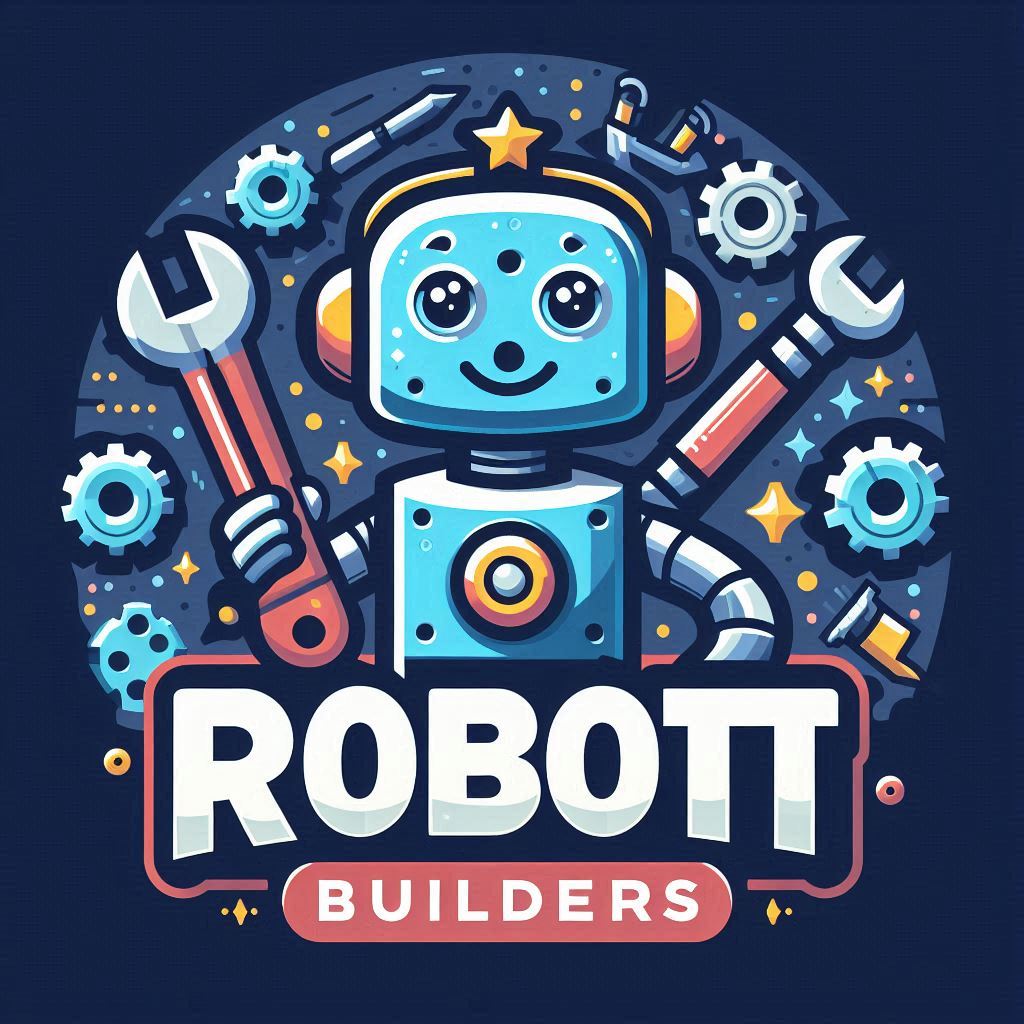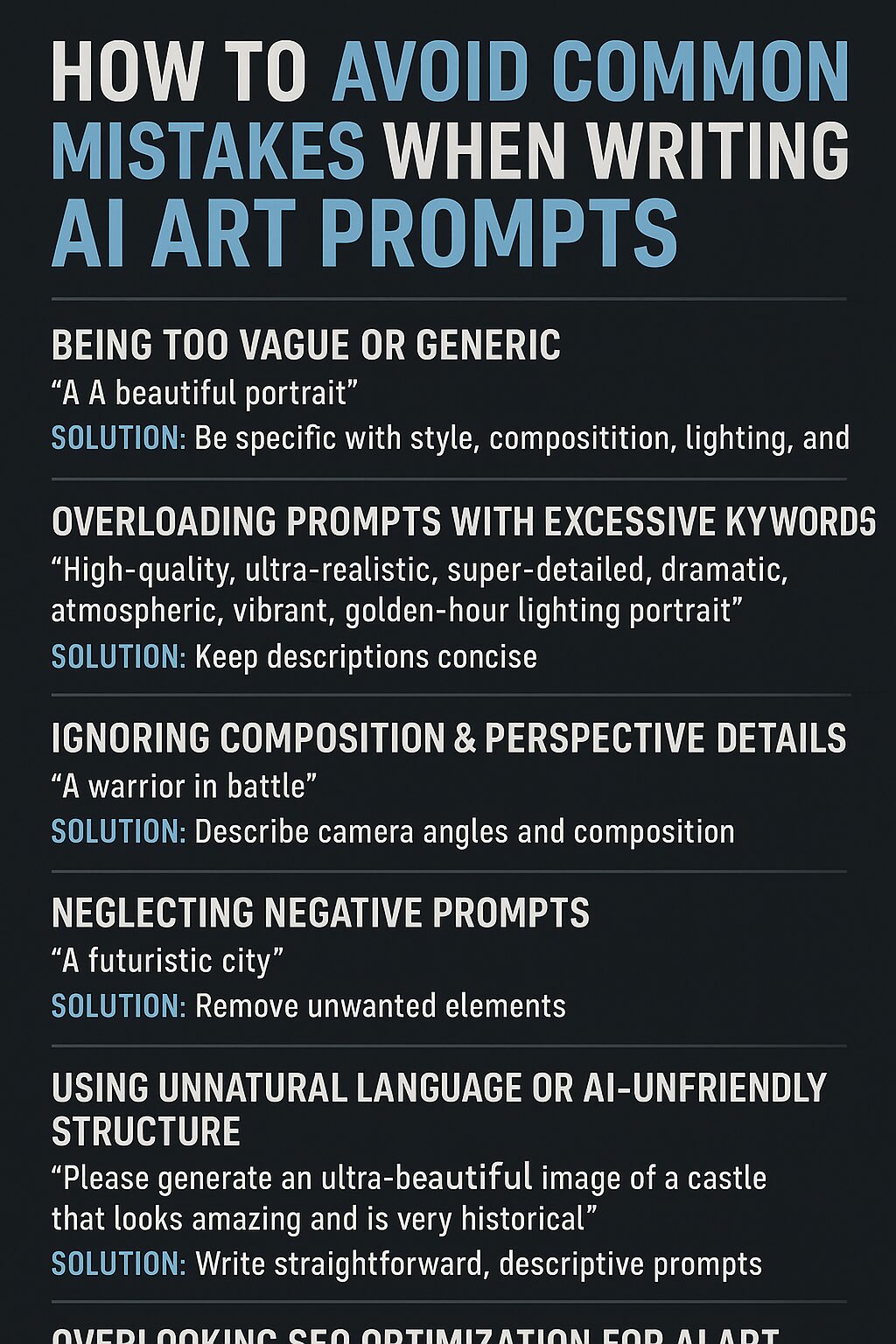Introduction
AI-generated art has revolutionized creative workflows, allowing artists to bring their visions to life with tools like MidJourney, DALL·E, and Stable Diffusion. However, writing effective prompts is an art in itself. Poorly structured prompts lead to low-quality, inaccurate, or inconsistent images.
In this guide, we’ll explore common mistakes AI artists make when crafting prompts—and how to fix them for optimal results.
1. Being Too Vague or Generic
🚫 “A beautiful portrait” ✅ “A hyper-realistic portrait of a regal woman with emerald eyes, wearing an intricate golden crown, in cinematic lighting.”
Solution:
Be specific with style, composition, lighting, and mood to guide AI effectively.
2. Overloading Prompts with Excessive Keywords
🚫 “High-quality, ultra-realistic, super-detailed, dramatic, atmospheric, vibrant, golden-hour lighting portrait.” ✅ “A cinematic portrait in golden-hour lighting with sharp details and soft depth-of-field effects.”
Solution:
Keep descriptions concise—too many adjectives confuse AI and lead to cluttered results.
3. Ignoring Composition & Perspective Details
🚫 “A warrior in battle.” ✅ “A dynamic close-up shot of a fierce warrior, mid-swing, with sparks flying, in a dark medieval battlefield.”
Solution:
Describe camera angles (close-up, aerial, wide-angle) and composition for greater control over AI-generated images.
4. Neglecting Negative Prompts
🚫 “A futuristic city.” ✅ “A neon-lit cyberpunk city skyline at night –no people, no distortion, no blurry details.”
Solution:
Use negative prompts to remove unwanted elements, making results cleaner and more refined.
5. Using Unnatural Language or AI-Unfriendly Structure
🚫 “Please generate an ultra-beautiful image of a castle that looks amazing and is very historical.” ✅ “A majestic medieval castle on a misty hill, surrounded by ancient stone walls, with soft golden-hour lighting.”
Solution:
Write straightforward, descriptive prompts—avoid conversational or vague phrasing.
6. Overlooking SEO Optimization for AI Art
🚫 Using random descriptions with weak keywords. ✅ Using structured metadata and long-tail keywords (e.g., “Hyper-realistic digital painting of a cyberpunk street with neon reflections”).
Solution:
- Use high-ranking keywords in titles, captions, and alt tags.
- Ensure consistent terminology across platforms for better search ranking.
Conclusion
Avoiding these common mistakes will level up your AI-generated artwork and ensure your prompts produce accurate, high-quality visuals. By refining descriptions, optimizing keywords, and structuring inputs strategically, you’ll maximize AI capabilities and create more impactful digital art.

